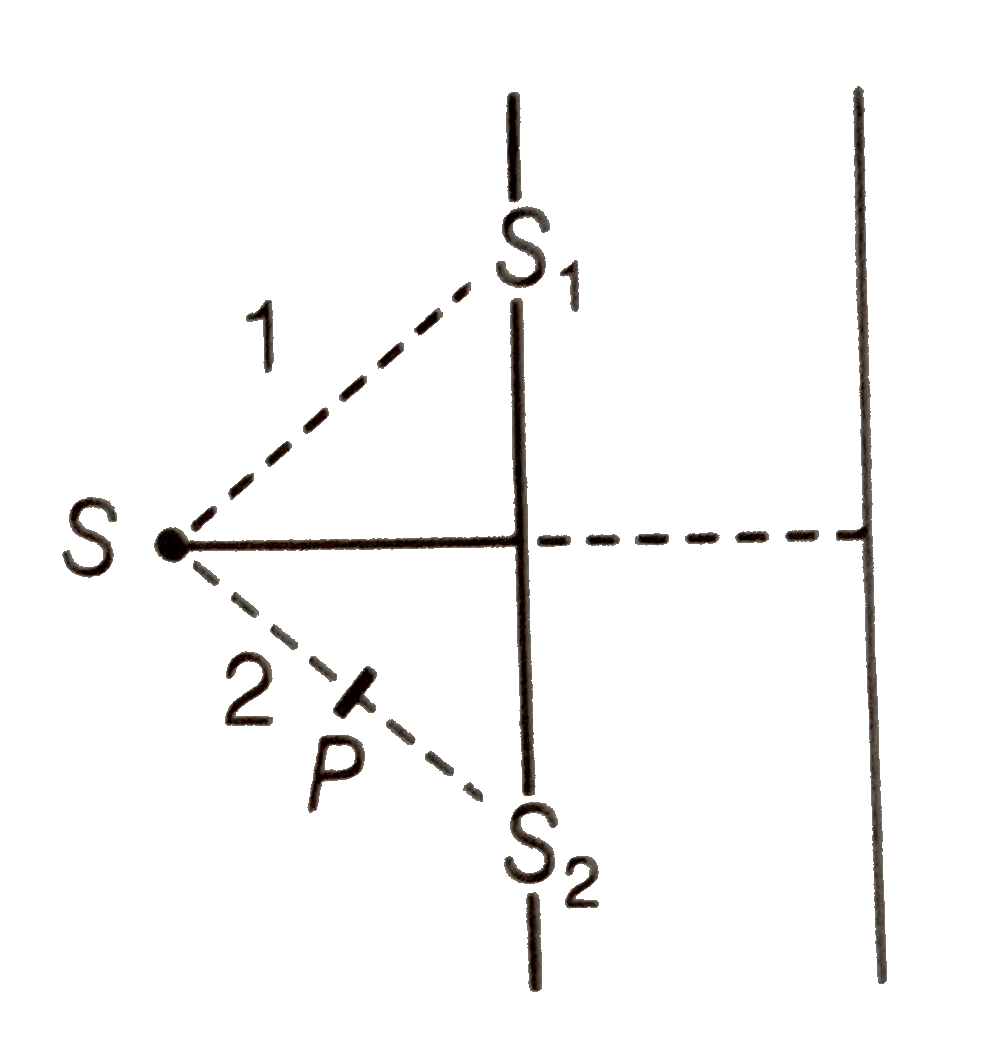As shown in figure a two slit arrangement with a source (S) which emits unpolarised light. is the intensity of principle maxima when no polariseer is present. Now a polarised 'P' is placed as shown with its axis whose direstion is not given. Then

the intensity principal maxima is
the intensity of principal maxima is
the intensity of first minima is zero
the intensity of first minima is
The correct Answer is:A, D
Without P :
where care the amplitudes of either of the beam in and 11 polarizations.
With P:
Assume is blocked:
Intensity
Given: = intensity wityhout polariser at principal maxima. intensity principal maxima with polariser
Intensity at first minima with polariser
.
Topper's Solved these Questions
- WAVE OPTICSBOOK - NARAYNACHAPTER - WAVE OPTICSEXERCISE - LEVEL - V
37 Videos
- WAVE OPTICSBOOK - NARAYNACHAPTER - WAVE OPTICSEXERCISE - LEVEL - VI
40 Videos
- WAVE OPTICSBOOK - NARAYNACHAPTER - WAVE OPTICSEXERCISE - LEVEL - III
30 Videos
- SEMICONDUCTOR ELECTRONICSBOOK - NARAYNACHAPTER - SEMICONDUCTOR ELECTRONICSEXERCISE - ADDITIONAL EXERCISE (ASSERTION AND REASON TYPE QUESTIONS :)
19 Videos
Similar Questions
Figure shown a two slit arrangement with a source which emits unpolarised light. P is a polariser with axis whose direction is not given. If I0 is the intensity of the principal maxima when no polariser is present, calculte in the present case, the intensity of the principal maxima as well as the first minima.

View SolutionFigure shown a two slit arrangement with a source which emits unpolarised light. P is a polariser with axis whose direction is not given. If I0 is the intensity of the principal maxima when no polariser is present, calculte in the present case, the intensity of the principal maxima as well as the first minima.

View Solution
Knowledge Check
Figure shown a two slit arrangement with a source which emits unpolarised light. P is a polariser with axis whose direction is not given. If I0 is the intensity of the principal maxima when no polariser is present, calculte in the present case, the intensity of the principal maxima as well as the first minima.
 AI08B34I0CI016D25I0
AI08B34I0CI016D25I0When an unpolarised light of intensity I0 is incident on a polarising sheet, the intensity of the light which does not get transmitted is
AzeroBI0C12I0D14I0A polariser is place in a pth of unpolarised light of intensity I0 An another polariser is placed in such a way that its axis makes an angle 30∘ with first. Opne The intensity of emergent light will be
A0BI04C3I04D3I08
Arrange the intensities of the transmitted light in their increasing order of magnitudes when they are passed through a system of two polarisers
(A) When incident light is unpolarised and of intensity I and the angle between the polarisers is 30∘
(B) When incident light is polarised of intensity 2I and the angle between the polarisers is 45∘
(C ) When polarised light of intensity 4I is incident and the angle between the polarisers is 90∘
(D) When incident light is unpolarised and of intensity 3I and the angle between the polarisers is 30∘
View SolutionWhat is meant by a linearly polarised light? Which type of waves can be polarised? Briefly explain a method for producing polarised light. Two polaroids are placed at 90∘ to each other and the intensity of transmitted light is zero. What will be the intensity of transmitted light when one more polaroid is placed between these two bisecting the angle between them ? Take intensity of unpolarised light as I0
View SolutionWhat is meant by a linearly polarised light? Which type of waves can be polarised? Briefly explain a method for producing polarised light. Two polaroids are placed at 90∘ to each other and the intensity of transmitted light is zero. What will be the intensity of transmitted light when one more polariod is placed between these two bisecting the angle between them ? Take intensity of unpolarised light as l0
View SolutionA unpolarised light is passing through three polaroids as shown. If final intensity is pqI0 then find (p+q).
View SolutionAn unpolarised light of intensity I0 falls on a polarised whose optic axis is inclined at 45∘ to the incident light. Then the intensity of light emerging from the polarised is :
View Solution
